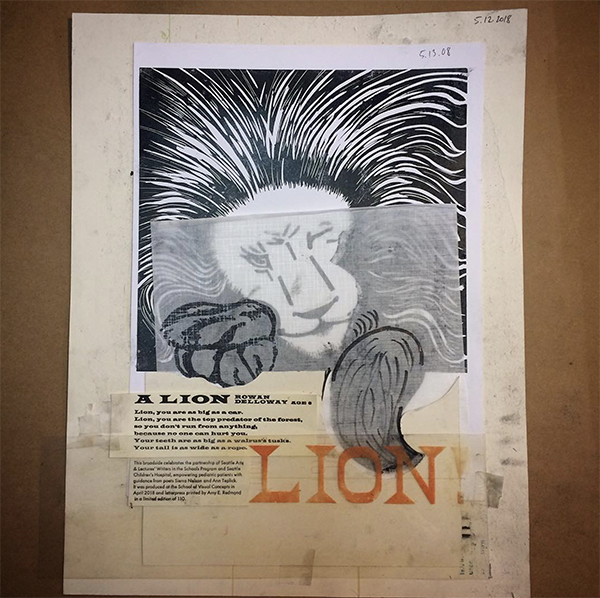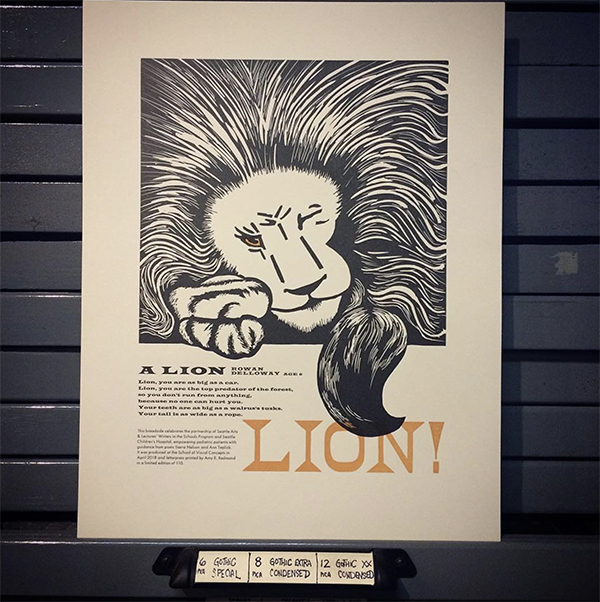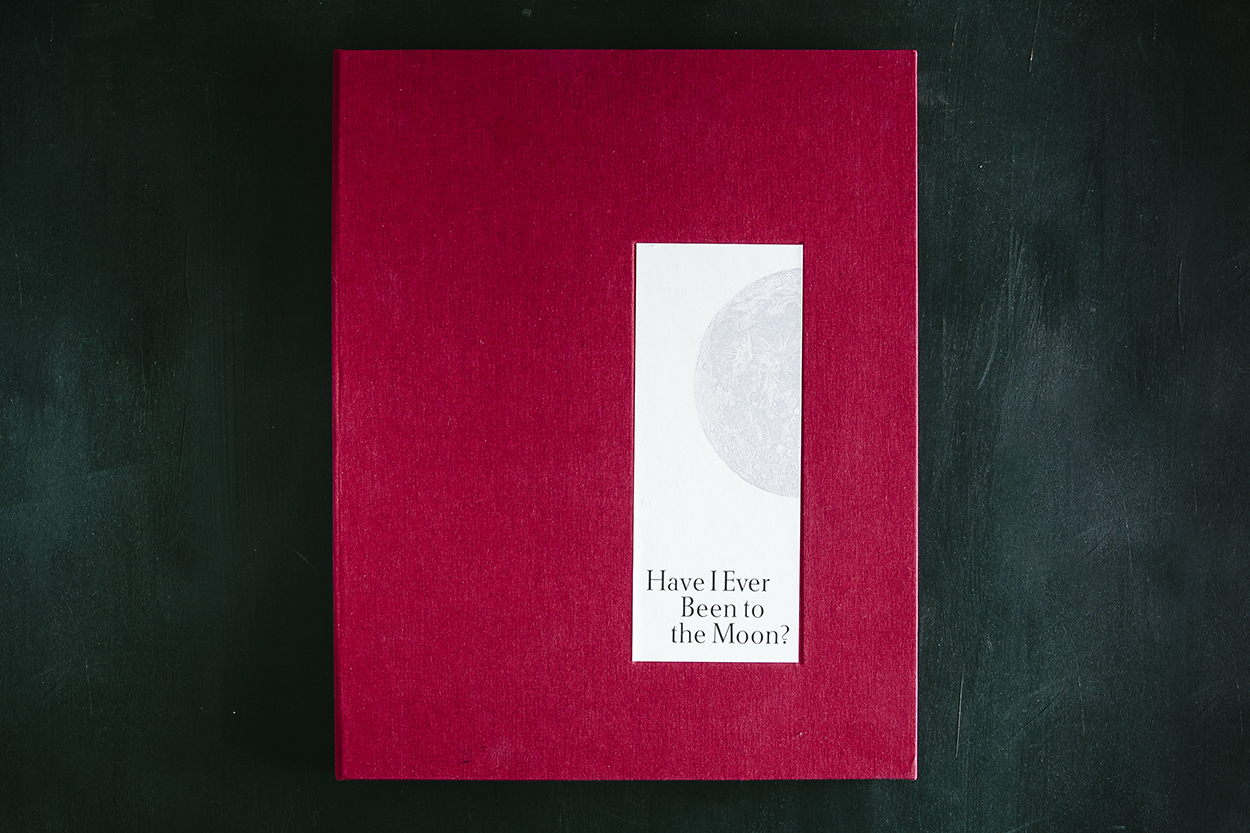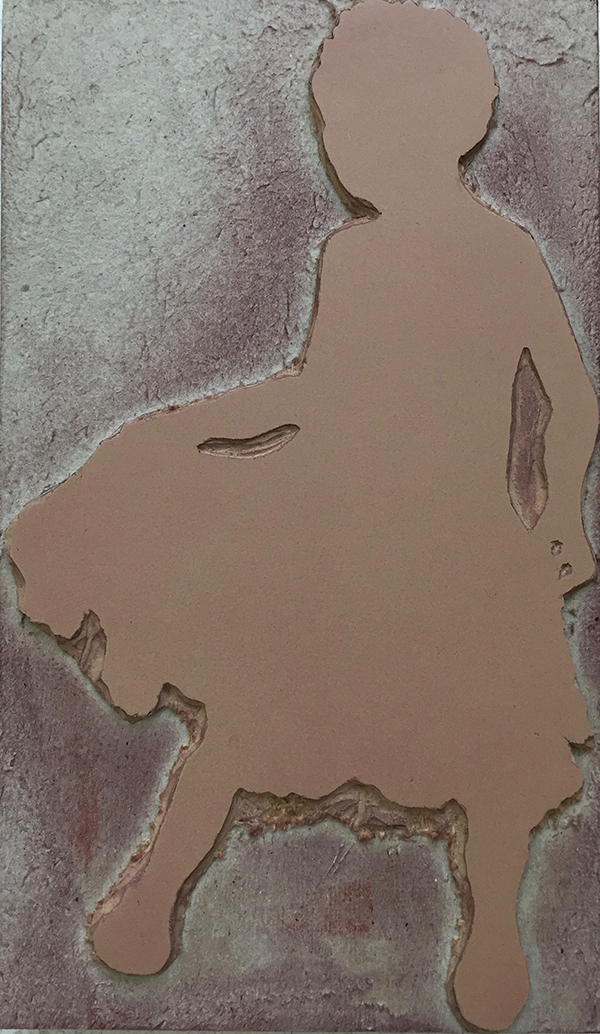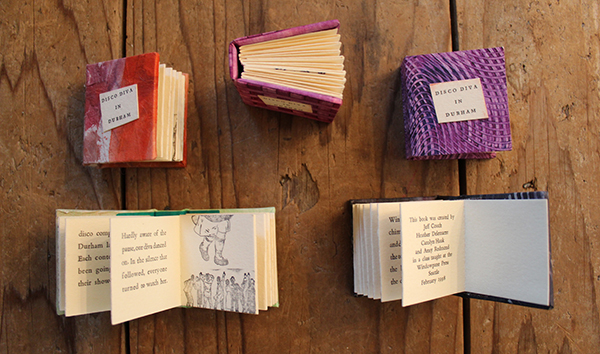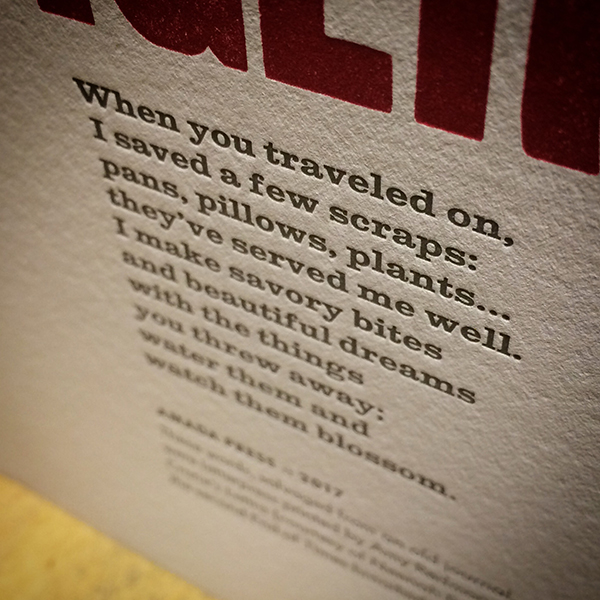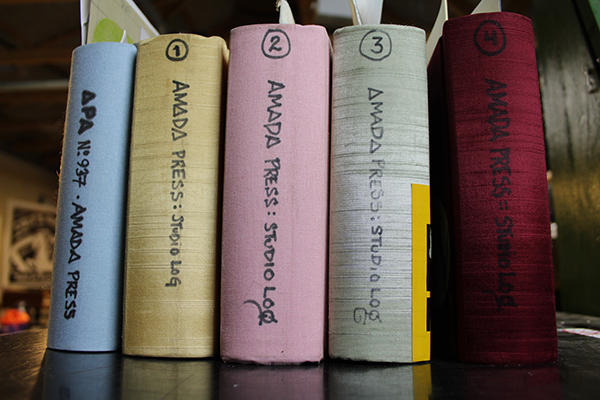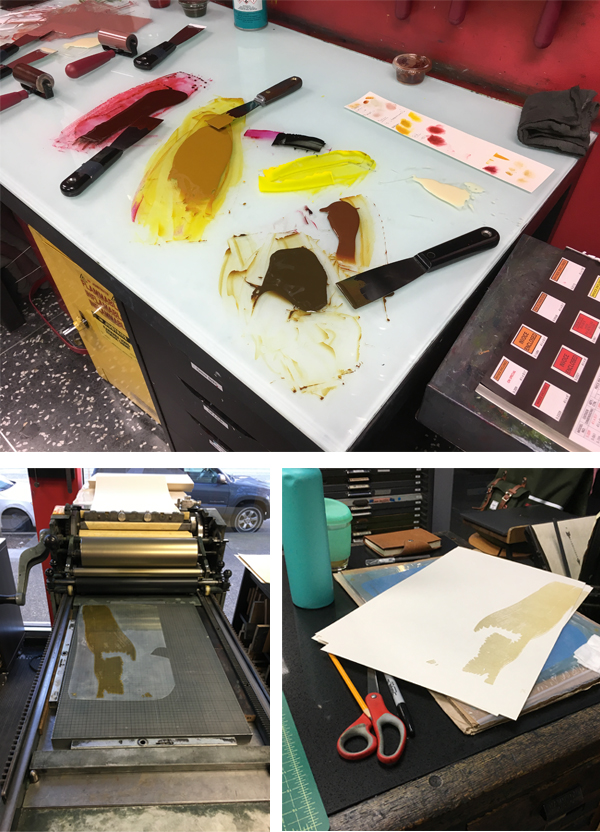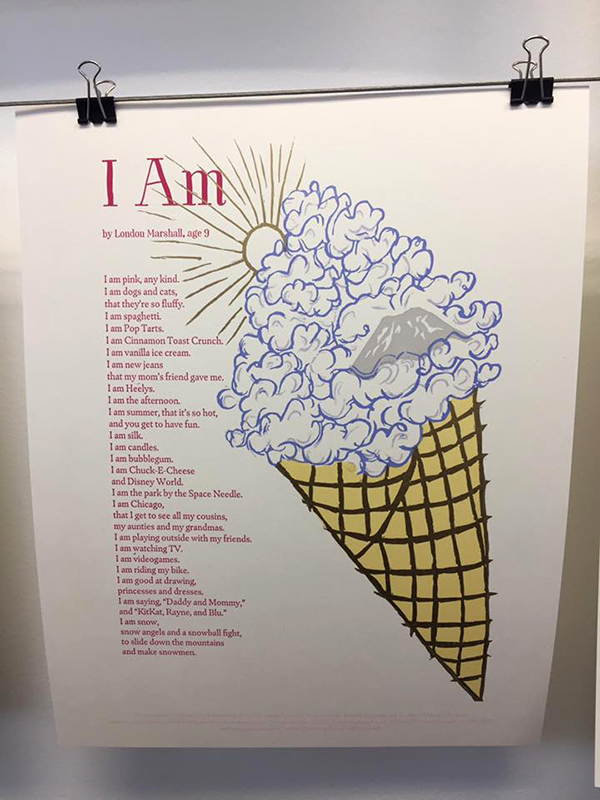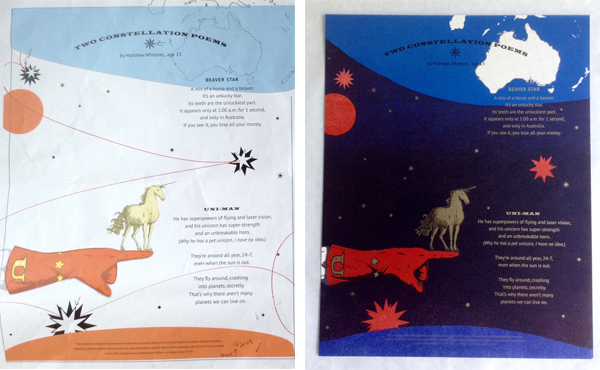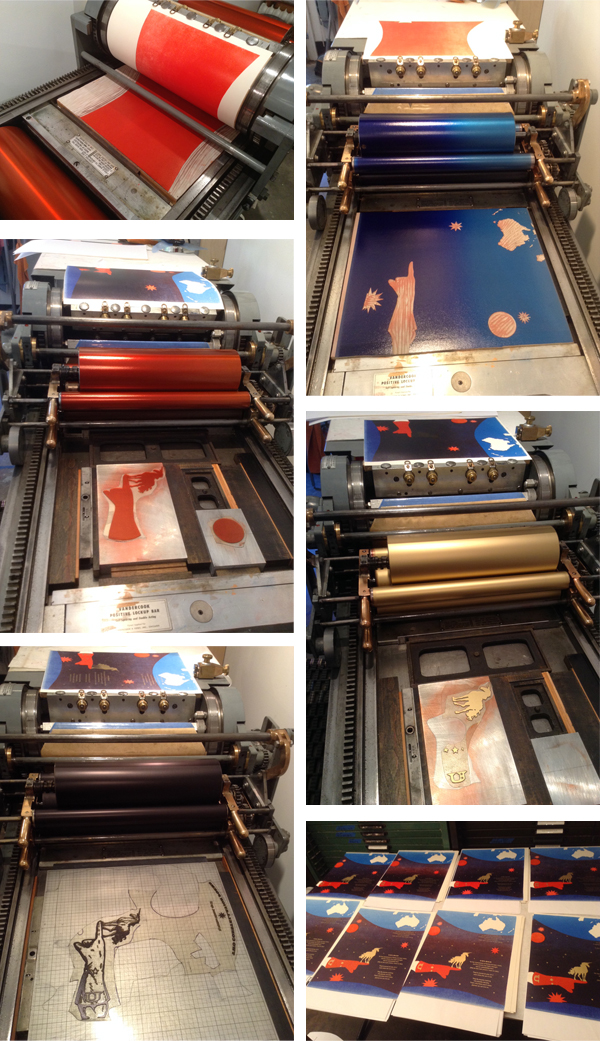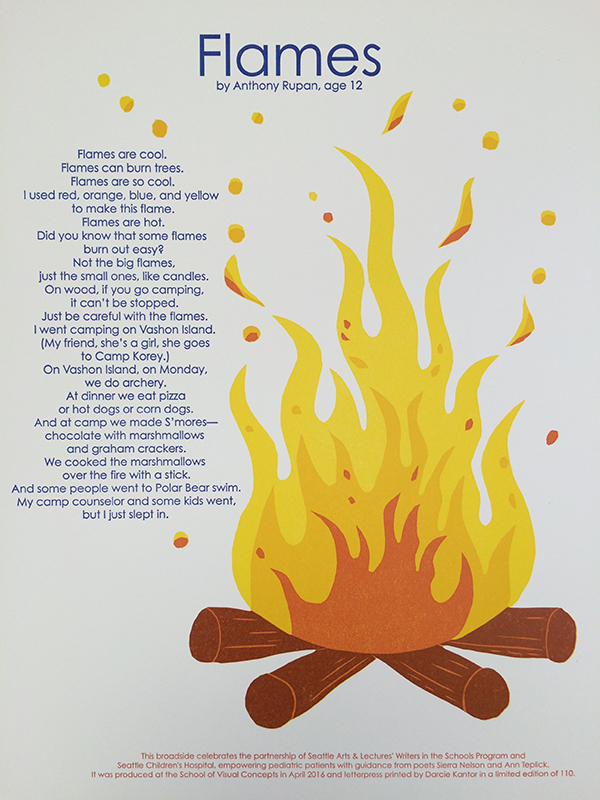Part two in our blog feature of the 2019 Seattle Children’s Hospital Broadside project features five more very talented printers and young poets as part of the collaboration between Writers in the Schools program, long-term patients at Seattle Children’s Hospital, and the School of Visual Concepts in Seattle, Washington. These five printers share with us how they brought each young writer’s words to life.
Justin Gonyea
I was very excited when I first read AJ’s poem because it would allow me to mix my love of comic books and letterpress. I love that AJ wrote a poem about the Incredible Hulk that a lot of kids and adults alike could relate to. His mom translated it to Chamorro, the language of the indigenous people of the Mariana Islands. I felt honored that I was trusted with creating a print using not only AJ’s words, but also the traditional language of his family.

Hulk is a character who struggles with fear, pain, and anger but also can use strength to do a lot of good as a superhero. Since AJ’s words reference all of these darker feelings, I didn’t want to emphasize the negative with imagery. What was a way that I could compliment AJ’s words and bring a little bit of that lighthearted feeling to a character who is everything but? How about Legos? I had been looking for the right project to experiment with printing Legos, and this seemed like a perfect fit!

I looked at a lot of inspiration for how to render Hulk using pixel art, and decided to use this as an opportunity to reference something else from my childhood. I used character sprites from the Super Nintendo video game “The Incredible Hulk” (1994) as a reference. Eric Bailey and Anthony Rosbottom were the original artists that worked on this game, and there were so many possibilities for really dynamic poses to draw from for my inspiration. In Photoshop, I created a simplified rendering of one of the sprites using a grid that was 32 pixel wide. I usually try to minimize the amount of time I’m on the computer when I’m working in letterpress, but I ended up designing every aspect of this print in Photoshop and Illustrator.

My broadside had a total of six passes on press. I rebuilt the pixel art using 1×1 Lego pieces, and a base that I made with a piece of wood and two sheets of Lego Baseplate. For the first pass, I started with the brighter green. Once the first color was printed, I slowly removed all of the Lego pieces using an ink knife. I should have gotten a plastic putty knife or some other tool to help remove these pieces as the ink knife really easily slipped and scratched the Lego pieces.

Once all the Legos were removed, I set up the pixel art for the dark green layer. I continued this process for the remaining pixel art colors. As I printed, I used a pica pole to help square off any of the Lego pieces that started moving around a bit. As they moved, it created an interesting energy/vibration that I really love the look of; as long as it didn’t get too out of alignment that is! All of my additional type for the poem, colophon, and byline were printed as my last pass on press using a photopolymer plate.


I didn’t get a chance to talk with AJ about his poem, but I hope that he enjoyed how I chose to represent his words. It’s an honor to be a part of this year’s Seattle Children’s Hospital Broadside project, and it was such a fun project to work on. I can’t wait to print with Legos again!
Leah Stevenson-Stahly
I always feel honored to participate in the Children’s Hospital Broadside project. This is my fourth year and each time it is such a treat to work with the poems and illustrate something that will hopefully resonate with the poet.

The poet had drawn a little comic that he used as inspiration for the poem so it only seemed right to keep that idea with the 4 sections of the poem. Rather than have a grid layout that’s common of comics, it seemed more appropriate to have it a little more freeform. The 4 sections of the poem are separated and on the page in a somewhat ordered yet almost haphazard way. Because of this, I added a light grey swoosh in the background to help draw the eye through the lines in the correct order. The final print came out with 6 colors in 6 passes (I had originally planned for a 7th but decided to skip it in the end).


I used rather non-traditional plates for this project. I have a laser cutter at home and decided to make my plates with it. I used an acrylic sheet (a break from my normal wood) as acrylics tend to warp less. I engraved the design onto the surface and while providing a great surface for inking, printing the background offered a bit of a challenge. It was not quite low or shallow enough and transferred ink so it was a little messy.

I had to do quite a bit of sanding and scraping to keep everything clean. Despite the challenges of printing with my homemade plates, I was pleased with the outcome.
Carol Clifford
My poet this year was Chance Petrone, who wrote What I Do. I was instantly drawn to this poet simply because of his cool name.

My initial idea was to play with the image of a lightning bolt based on Chance’s imagery of his lightning quick speed but felt it was too obvious. It only spoke to one aspect of Chance that he conveys in this poem describing himself. Aside from running at lightning speed, Chance points out that he doesn’t always follow the recipe and that people are drawn to him. These two descriptions led me to the magnet image with the surrounding force field. I liked that the magnet conveyed how dynamic he is and also had a lightning bolt-like shape.


The background blue I had initially planned to pressure print. I don’t know why I say I’m going to pressure print every year, as if it is some easy-peasy technique, because I just can’t seem to make it work the way I want it! While in the 12th hour, after attempting several unsuccessful approaches to pressure printing, I put out a request to the other printers on the project for a spare large piece of linoleum. I received many responses which just shows how supportive this group of printers are. BUT, as I was in the 12th hour, I needed something asap and found a small piece of leftover Marmoleum flooring from our kitchen. I had one chance to make it work.
I transferred the magnet outline and hoped for the best. Carving away this fairly simple shape was a bit more difficult than expected. The abstract pattern of the Marmoleum is the same throughout the layers. Carving into the flooring material was easy enough but once you carve out a spot it doesn’t look any different than the un-carved part. This made it hard to read. The results were fine and similar to what I had hoped from pressure printing.

I didn’t want the angled ground shape to be solid because I thought it would look better textured next to the texture of the blue background. I created a subtle texture with cloth under the draw sheet.
After these first two layers, next came the magnet fill/force field and the text which all went smoothly.
Jenny Wilkson
One of the most evocative stanzas in Audrey’s poem describes her comforting visualization of driving home from the hospital—softly, gently, like clouds drifting away. I seized the image of clouds, and her color of freedom, “real and super shiny gold.”

When I was sketching the design for this broadside, I was on vacation in New Mexico. There, I saw Georgia O’Keeffe’s paintings of clouds from above. I admired the gradient in the sky, from a saturated blue to almost white. I decided to abstract my clouds into geometric forms and cut the printing plate from plywood on a laser cutter. I printed the sky on my Vandercook SP-15 with a split fountain of blue to opaque white, with the clouds knocked out, in the white of the paper. The gold ink in the title is made up of a two-part gold paste and varnish concoction that is the most “real and super shiny gold” I know how to print. I first printed the title in blue in order to give the gold ink something extra smooth to sit on so it would really sparkle.

All type was printed from photopolymer plates donated by Boxcar Press. I set everything at an angle, parallel with the clouds, and curved the left margin of the poem in a long graceful swoop to echo the shapes of the clouds and to give the broadside that “freedom feeling.”
Laura Walczak
This was my 2nd year as a printer for this project. Last year helped set my expectations for how quick the timeline moves and how to portion out my time. I had the best intentions for getting things done early, and ahead of time, but seeing my intended imagery through ended up taking a lot more time than I had hoped for. It was a relief to know what my absolute worst case timeline would be for finishing everything up. Thanks to Boxcar with the rush plates right on time!

Almost immediately after selecting the poem I was working with, I had an idea of how I wanted to accompany the poet’s words with imagery. He had listed many things that he was, and the last section of his poem he talks about going camping with his family. I thought back to the “Hidden Pictures” in Highlights magazine, where an illustration of a scene would have various items hidden within it. This seemed like a perfect fit, having a camping scene, and then including many of the other items in the poem.

I did my illustration in Procreate on iPad pro, which was a lot of back-and-forth… I couldn’t be entirely solid on the hidden pieces before drawing the scene. And I couldn’t draw the entire scene without figuring out how the hidden pieces would be woven in. This is definitely one of the things that ended up being a longer process than I had anticipated. I had such a vivid vision in mind of what this would eventually look like and it was harder to get that out onto screen and to paper.

When I finally got my linework of the illustration where I wanted it to be (as well as the text of the poem, of course!) and had hand-lettered the title, I worked on figuring out how to use color on the final print. I really wanted to use yellow, as that color was one of the things mentioned in the poem (and, “pee”). With the lush forest setting, I wanted green to have a presence as well. Still working in Procreate, I played with some fill layers, and settled on a light yellow and a light blue, that would (hopefully) layer to make a decent green. I exported my Procreate file to a PSD, and brought it to the desktop to do the nitty gritty of file prep and fine-tune some trapping, and get files plate-happy.
Fast-forward a couple of days, my plates arrived and my paper was on hand. I had reserved some (read: full day’s worth of) press time at SVC, cashing in a vacation day to do a weekday print marathon. I pawed through a swatch book to get a ballpark idea for ink mixing, but I’m always one more to shoot from the hip with my inks rather than precisely measure out proportions (it’s been working well for me!). Since I was planning for a lot of ink coverage and overlap, cobalt drier made its way into all three of my colors.

I got ready to print, paper counted out, press set up, my first plate stuck on to the base, and my creamy light blue ink on press. I thankfully didn’t need to do too much for makeready, and getting through my stack of 110 plus sheets went pretty quickly. Then, cleaning off the press and moving on to the light yellow I’d mixed that had a good deal of translucent white in it, aiming to get a nice green on the overlap of that with the blue areas. It worked, and the green that came out was actually better than I had been hoping for. My last run-through of the press was my key plate with all the linework and my darkest color.

The cobalt drier seemed to help, and when I went to trim my prints out a day or two later, they were plenty dry.

I wanted to create a broadside highlighting this poem, and enticing the viewer to keep looking, or to return later and find something new. I didn’t want to create something that was one-note, and could be digested in the first glance. I’m really pleased with how the broadside turned out. I believe I was able to breathe life into the words of a child, to share them, to memorialize the spirit that delighted in so many of the little things, and to celebrate that.


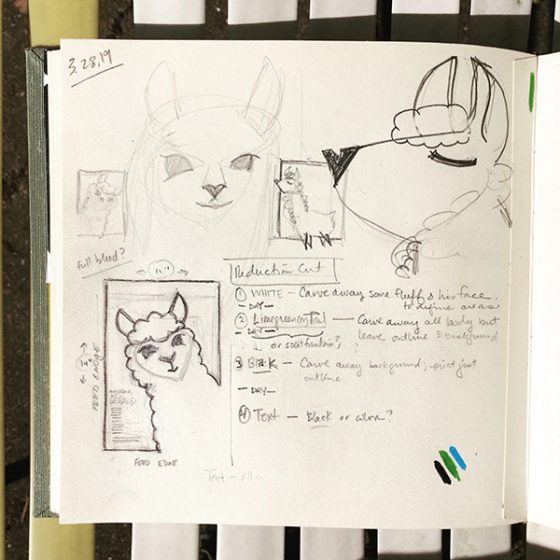
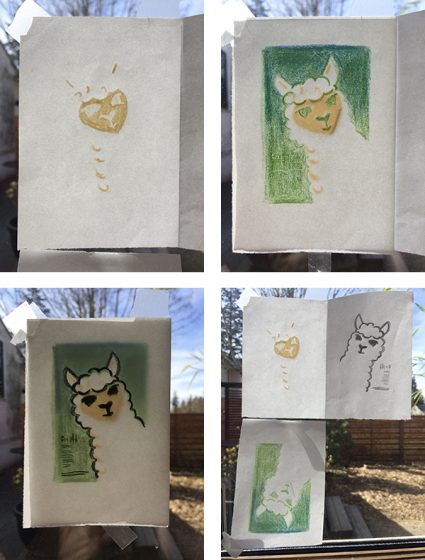












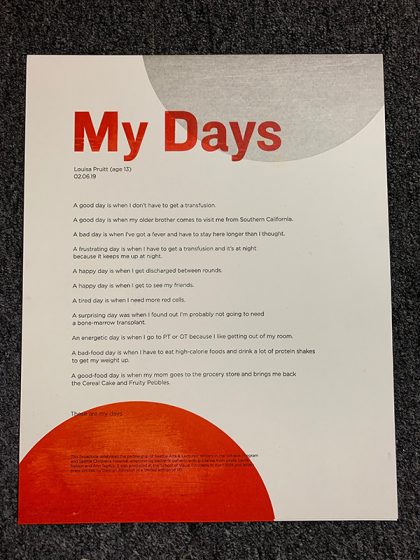




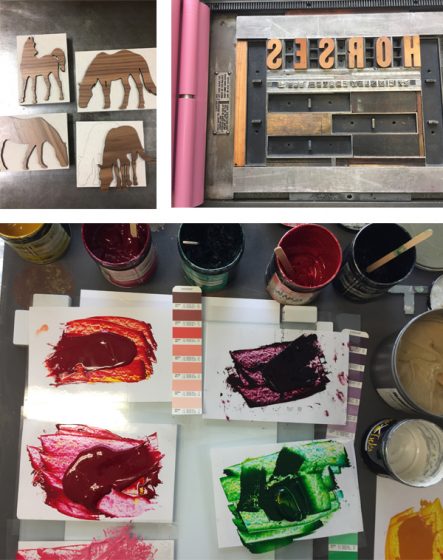


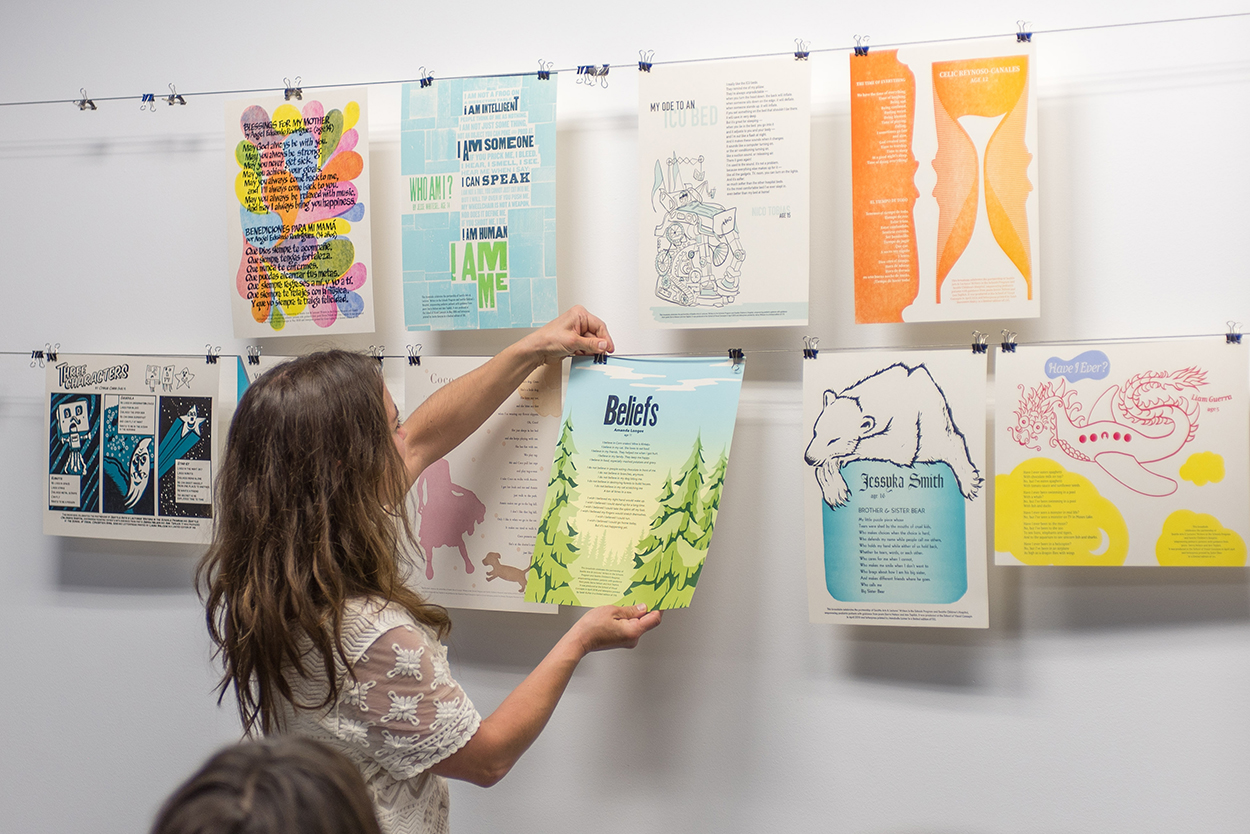


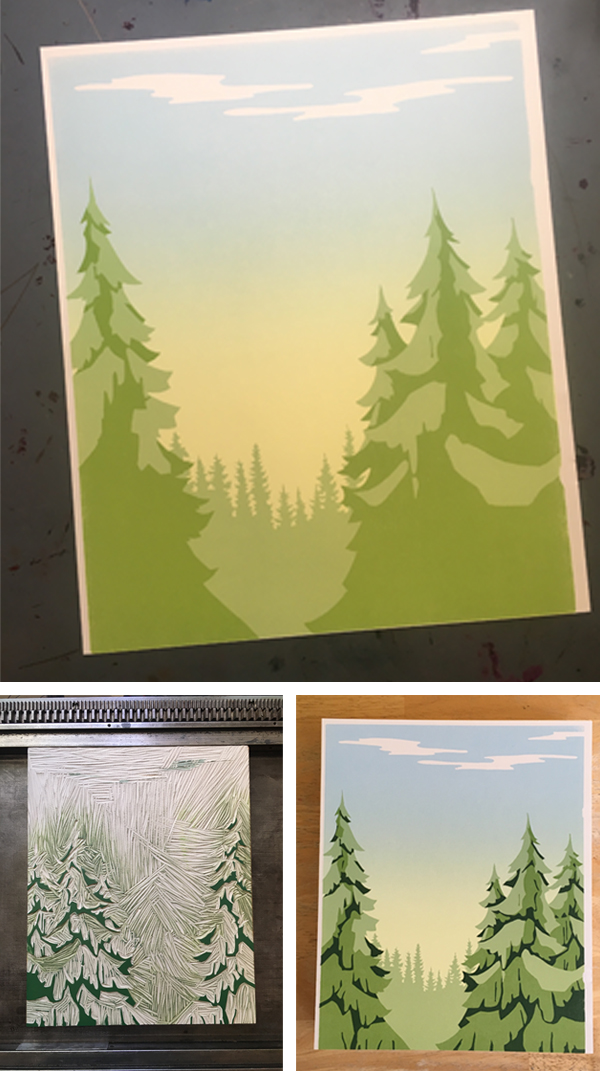


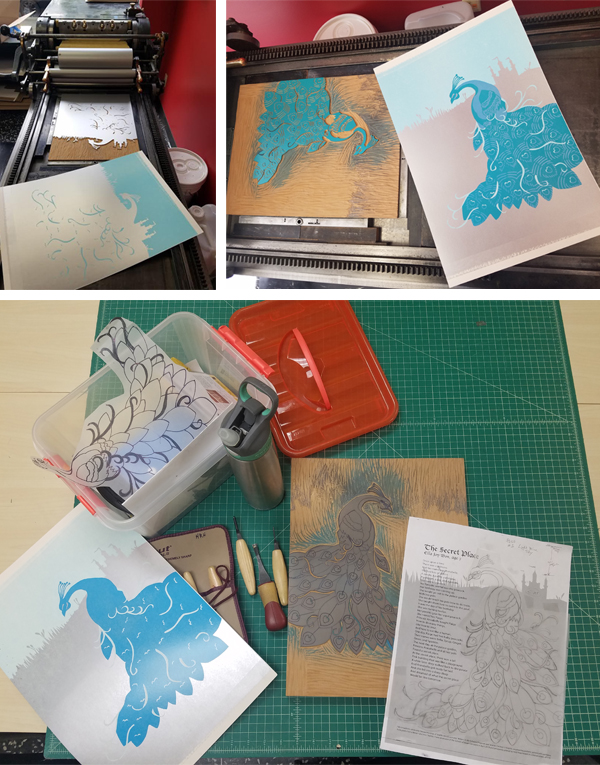


 (All other photography courtesy of Amy Redmond.)
(All other photography courtesy of Amy Redmond.)



